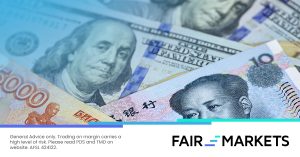The world of financial markets has undergone significant changes in recent years, driven by technological advances and investor behaviour changes. One notable emerging trend is the concept of “always-on” trading. Traditionally, trading has been limited to specific market operating hours, but now, with the advent of digital platforms and automated tools, investors can engage in continuous investment activity. By being “always on”, traders can quickly adapt to market conditions and capitalise on emerging trends.
With the advent of the internet, mobile devices and advanced financial platforms, traders now have access to a wealth of real-time information. This wealth of data enables ‘always-on’ traders to stay informed about worldwide market developments, news, and financial events. This information allows traders to make more informed decisions, identify potential risks, and seize investment opportunities before they become widely known.
Automation plays a key role in always-on investing. Using robo-advisors and algorithmic trading systems, investors can execute trades, rebalance portfolios and manage their portfolio seamlessly. Automation eliminates human error, ensures consistency, and frees up time for traders to focus on higher-level strategic decisions. In addition, technological advances such as machine learning and AI enable traders to analyse vast amounts of data, identify patterns, and make data-driven investment decisions.
The benefits of always-on trading are undeniable. By freeing themselves from the constraints of traditional trading, traders can seize opportunities in global markets, respond to volatility with agility, and potentially generate superior returns. It also fits in with the modern traders’ fast-paced lifestyle, allowing them to engage with their portfolio at their convenience, from their smartphone or computer, regardless of location.
However, it is essential to note that always-on trading is not a one-size-fits-all solution. While it offers immense potential, it requires careful consideration, education and understanding. Trading need to align their investment objectives, risk tolerance and time horizon with this approach to ensure it fits their unique circumstances.
Sources: Forbes, M&G Investments


